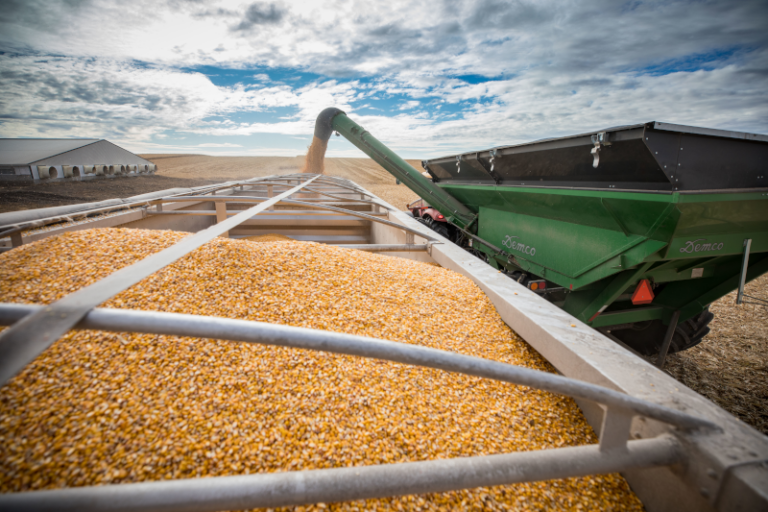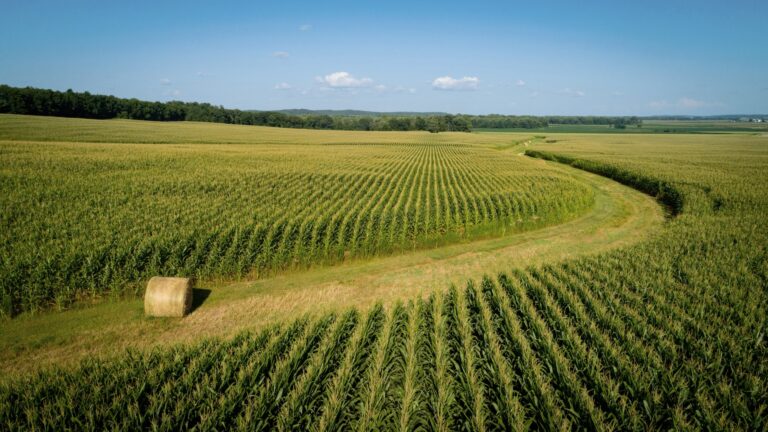Start of Production of First U.S. Sustainable Aviation Fuel Plant Hits Home Need for Low Carbon Corn Ethanol
Iowa Corn Farmers and Biofuels Producers Missing Out on Massive New Market Until Carbon Sequestration Projects Move Forward
Sustainable aviation fuel (SAF) could grow into the largest new market ever seen for U.S. farm commodities thanks to the start of production of SAF at LanzaJet Freedom Pines Fuels. Without low carbon ethanol, which requires carbon capture and sequestration (CCS), Iowa farmers could miss out on the chance to unlock this new market. No Iowa ethanol plant currently has a carbon intensity score low enough to qualify as a SAF feedstock. Only one plant in the U.S., using CCS, is currently producing SAF-friendly ethanol. By contrast, Brazil produces over 7 billion gallons of ethanol with a carbon score expected to qualify for SAF production.
“Today and every day going forward, American farmers and ethanol producers are losing demand until we get carbon capture and sequestration online,” stated Monte Shaw, Iowa Renewable Fuels Association executive director, who was in Georgia today to witness the LanzaJet grand opening. “LanzaJet is proving that SAF from ethanol is here today. Now it is up to us to produce a qualifying ethanol feedstock. Iowans need to realize that CCS is the key to the new market. Regardless of individual views on carbon policy, our business is making the products our customers want and right now we can’t do that.”
“LanzaJet Freedom Pines Fuels will use a variety of low carbon sustainable ethanol, making this an eye-opening experience to what Iowa corn farmers could expect to be a part of,” said Dan Keitzer, a farmer and Iowa Corn Usage and Production Committee Chair. “However, due to our inability to lower our CI score for ethanol plants here in the state, we will be missing out on a large market for the corn we produce, which is unsettling as we have had larger carryout numbers in recent years.”
The new SAF market is potentially massive according to a new study unveiled today by Decision Innovation Solutions (DIS), Iowa’s premier agricultural economic firm. The study found fully maximizing the potential of the SAF production in Iowa will have a generation impact. To meet the demand, DIS projects that Iowa would build:
- 11 new 200-million-gallon-per-year ethanol plants
- 5 new ethanol-to-jet SAF production facilities
- 3 new facilities that convert soybean oil, fats and greases to SAF.
“The construction and ongoing operations of these facilities hold the promise to fundamentally transform rural Iowa in ways even bigger than the current biofuels industry,” stated David Miller, DIS chief economist and report author. “We have the opportunity to set the stage for the next 25 years when corn production will rise to 20-21 billion bushels per year based on current acres. No other market but SAF can utilize that corn. If we do not embrace low carbon ethanol to unlock SAF, we are likely to lose 20 million acres of corn across the Midwest and the $10 billion in farm income those acres create. What will our legacy be?”
According to the study, while building out the SAF infrastructure will cover many years, the cumulative impact in Iowa will:
- Create over 35,000 jobs over the next 25 years
- Add almost $2.3 billion to Iowa incomes
- Boost Iowa GDP by more than $3 billion.
Even more exciting, the ongoing operation of this infrastructure spurs the Iowa economy every year:
- Generating over 22,000 jobs
- Increasing Iowa incomes by nearly $1 billion
- Growing Iowa GDP by more than $2.7 billion.
“The combined economic impact of constructing and operating the expected SAF infrastructure is like nothing the Midwest has ever seen,” said Miller. “And it is coming at just the right time. U.S. corn production is growing at four times the rate that demand is growing. Over the next twenty years, U.S. farmers are looking at producing 5 billion excess bushels of corn from existing acres. Add to that the increase of electric vehicles that reduce ethanol use and the rise of Brazilian corn production, and its not hard to see that we could be in for some tough times. Luckily, SAF is big enough to take all the corn we can grow and then some. The question is simply whether Iowa will do what it takes to be a part of this huge new market.”
Shaw concluded: “We are not in a status quo situation. Only the fourth year of a drought has put off the day of reckoning this long, and even with the long drought we’ve seen corn prices drop two bucks a bushel. The power is in our hands to unlock the massive SAF market. We urge all Iowans to allow farmers and ethanol producers the tools they need to move our great state forward to a time of unprecedented economic prosperity.”
For More Information:
Rachel Zumbach, Public Relations Manager, rzumbach@iowacorn.org, 515-225-9242

